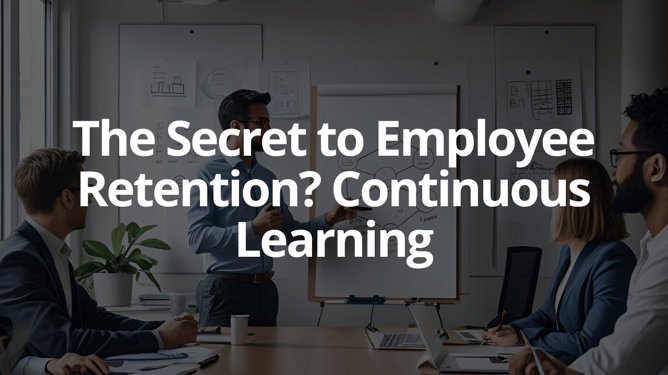Why Successful Leaders Always Change First
“Everyone thinks of changing the world, but no one thinks of changing themselves”
Leo Tolstoy
I thought Leo Tolstoy’s quote was an appropriate starting point for this post.
Many of our clients here at Excel talk about:
- The challenges of managing organisational change
- Various perceived ‘failures’ they have experienced along their leadership journey
It seems there is a direct link between leading and managing change and the willingness of leaders to change first, something that is confirmed by extensive research by McKinsey.
 A company isn’t a company without people.
A company isn’t a company without people.
It appears logical then that if an organisation wants to change, it starts with its people changing first. If leaders are to lead and manage the change, then surely they are the first people who need to change?
If leaders continue to personally lead change in the same way they have previously then surely, they will keep getting the same frustrating results, irrespective of what their team do?
Further research from McKinsey suggests “half of all efforts to transform organisational performance fail either because senior managers don’t act as role models for change or because people in the organisation defend the status quo. In other words, despite the stated change goals, people on the ground tend to behave as they did before.
Equally, the same McKinsey research indicates that if companies can identify and address pervasive mind-sets at the outset, they are four times more likely to succeed in organisational-change efforts than are companies that overlook this stage.”
If the conclusion then is that change starts with leaders changing and being a role model, we need to understand more about being an ideal leader and role model first.
What Makes A Great Leadership Role Model?
 Lolly Daskal, one of the top leadership experts and New York Times bestselling author suggests the following are traits which the best leadership role models share:
Lolly Daskal, one of the top leadership experts and New York Times bestselling author suggests the following are traits which the best leadership role models share:
- Self-awareness
- Empathy
- Positivity
- Humility
- Trust
- Integrity
- Respect
- Honesty
It’s interesting to see that self-awareness is at the top of the list, something we have talked about many times here on the Excel leadership blog. Leaders who have the mindset of
‘change me first’ can reflect internally on their behaviours and the impact they have on others.
The degree of this self–reflection influences a person’s ability to change.
We each have our own opinions, values, fears, aspirations and priorities. The combination of these unconsciously influences our choices and decisions. Unless you have increased awareness about how your beliefs control your decisions and actions, then you won’t be able to make a different choice.
Let’s use an example from the medical industry which many of you may be able to relate to.
The MD of a medium-sized medical device company wants to introduce a new way of targeting specific clinicians according to geography and business potential.
This means some of the sales team will have new prospects and accounts, and others will keep their existing clients and accounts.
The decision was made to roll out the changes, brief the sales team, and the expectation was ‘they will just need to get on with it”, with no consideration about the implications for the team, their ability to earn a bonus or training needs.
The MD’s belief is that you tell people what to do and they should do it. That’s what they are paid to do. Now, many of you will not be surprised that in this kind of situation the change doesn’t quite go to plan and rather than sales increasing in the first quarter after the change, they fall.
What Happens When A Leader Changes First
 Let’s stay with our example…
Let’s stay with our example…
If the MD were aware that their Modus Operandi of “tell them, and they just need to do it” doesn’t work when managing change, they would have:
1. Listened when a senior leader highlighted that there would be some training needs.
2. Taken time to think through and plan how they would handle changing targets and bonus
payments. As well as other implications for some of the team short term.
3. Made some different choices about how the change was communicated and implemented,
recognising that not everyone operates in the same way as the MD.
Had the MD made changes first, the outcomes would have been different.
What might this mean for you? As you think about some of the change you are managing right now, take some time to step back and reflect on how you could be handling the situation to get improved outcomes; maybe the initial change needs to come from you first?
Here are a few questions to ask yourself first.
- Where am I experiencing barriers to change?
- Where are things happening too slowly?
- What’s not working how I expected?
- How are the team handling the change?
Then as you reflect on your answers to the above, ask:
- What am I doing that is contributing to the current situation?
- What can I change as a result?
- What can I do differently that will help the team move through their challenges?
- What am I not doing that I could start doing?
As change is a constant in organisations today, the more leaders develop themselves by changing first, the more successful they will be managing change and their own success.
Thanks,
Rachel Hewitt-Hall
About Excel Communications
Excel Communications has a 30+ year history as a global leadership and communication skills company providing training and development to organisations across the globe, view our case studies here.
We have a team of expert trainers delivering programmes across four continents in multiple languages. Call us now on +44 (0) 1628 488 854.
Important
If you would like to watch our leadership masterclass recordings, you can access the latest complimentary guide here.




